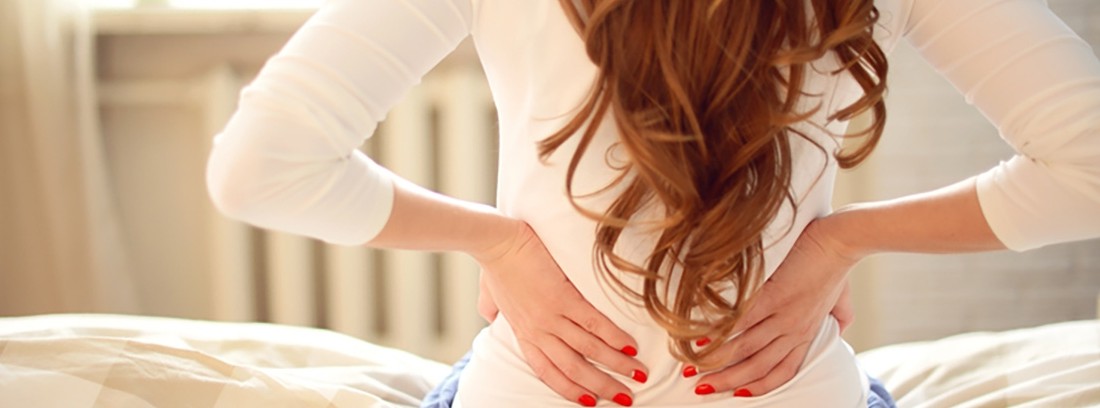Low back pain, how to prevent and treat it?

Low back pain is one of the most frequent reasons for medical consultation. Between 60-80% of people will suffer from it throughout their lives and, in general, it has a good prognosis. Up to 90% of cases recover in six weeks.
What is it
Low back pain is defined as the presence of pain, generally accompanied by muscle tension, in the lumbar region, between the rib cage and the lower gluteal region. It can be acute or chronic (when it lasts beyond 12 weeks). In most cases, low back pain has mechanical characteristics since:
- pain varies with movements, postures, and efforts.
- They are generally due to a malfunction of the back muscles, although they are sometimes associated with structural injuries of the spine (joints, vertebral discs). It is not always possible to determine the origin of the pain
- Often accompanied by secondary muscle contractures
In these cases, it is neither serious nor urgent. Acute low back pain is a reason for urgent consultation when it is accompanied by neurological symptoms (leg or foot paralysis, loss of sensation, sphincter involvement: difficulty urinating or incontinence).
In some situations, chronic low back pain is a warning sign of potentially serious systemic diseases, particularly when it is accompanied by poor general condition, continuous pain with functional disability, accompanying neurological deficit or serious underlying disease (cancer, immunosuppression ...)
Diagnosis
The diagnosis of low back pain is fundamentally clinical, based on the symptoms and the physical examination of the patient. When the pain is strong and is not relieved within 6 to 12 weeks and / or there are any alarm symptoms, imaging scans are performed: X-ray, CT,. The EMG is a test that allows to determine if there is involvement of the nerve roots.
Treatment
Except in the first days of an episode of acute low back pain, in which the pain can be severe and disabling, rest is contraindicated. On the contrary, the patient must perform the highest degree of activity that is possible, avoiding overloading the back.
Pharmacotherapy
In the acute low back pain, paracetamol as the first option, and systemic non-steroidal anti-inflammatory drugs (NSAIDs) as the second option if the pain progresses.
In the chronic low back pain anti-inflammatories should not be taken beyond 3-4 months (side effects increase). Other drugs such as opiates, muscle relaxants and / or antidepressants can also be administered, always under strict medical supervision given their side effects. MAPFRE's health insurance offers you a 24-hour Telephone Medical Guidance service for any query related to your health.
It is preferable to avoid girdles and corsets except in exceptional situations as they weaken the back and abdominal muscles, which are the natural support elements of the spine.
Rehabilitation
To strengthen these muscles, active exercises are necessary, the isometrics (stretching, etc.) are useful to maintain tone and avoid contractures in already developed muscles. The best exercise is backstroke swimming, as it strengthens the paravertebral and abdominal muscles that keep the body floating and the trapezius and deltoid group. Breaststroke swimming is the least recommended as it overloads the lumbar hinge.
Other treatments
In more complicated cases, there is clear pain due to nerve root involvement, other options include infiltration of the area with anesthetics (epidural). Surgical treatment is reserved for very specific cases and must be established after careful evaluation of the case.
Postural tips
Certain postural reeducation tips can help improve the clinic and prevent it from reappearing:
SLEEP:
- Better to do it face up or, in any case, on the side.
- The mattress must be of intermediate firmness (5.6 on the scale of the European Committee for Standardization).
- The pillow must be thin if you sleep on your back and thick or rolled up if you sleep on your side.
SITTING:
- The chair must respect the natural curvatures of the column with adjustable backrest, height and inclination
- Partial twists and turning the whole body at the same time should be avoided
- It is convenient to get up and walk every 45 minutes
LOAD WEIGHT:
- Vertical load: squat down by bending your knees, as close as possible to the weight to be carried and with your back straight. Keep the weight as close to the body as possible.
STANDING:
- Do not stand if you can be walking.
- Avoid high-heeled or totally flat shoes. A 1.5-3 cm heel is usually suitable.
GETTING UP and SITTING:
- Do it slowly and leaning on your knees. In bed, go from lying down to sitting on your side and then sitting up. Don't drop down, keep your back straight.
(Updated at Apr 13 / 2024)